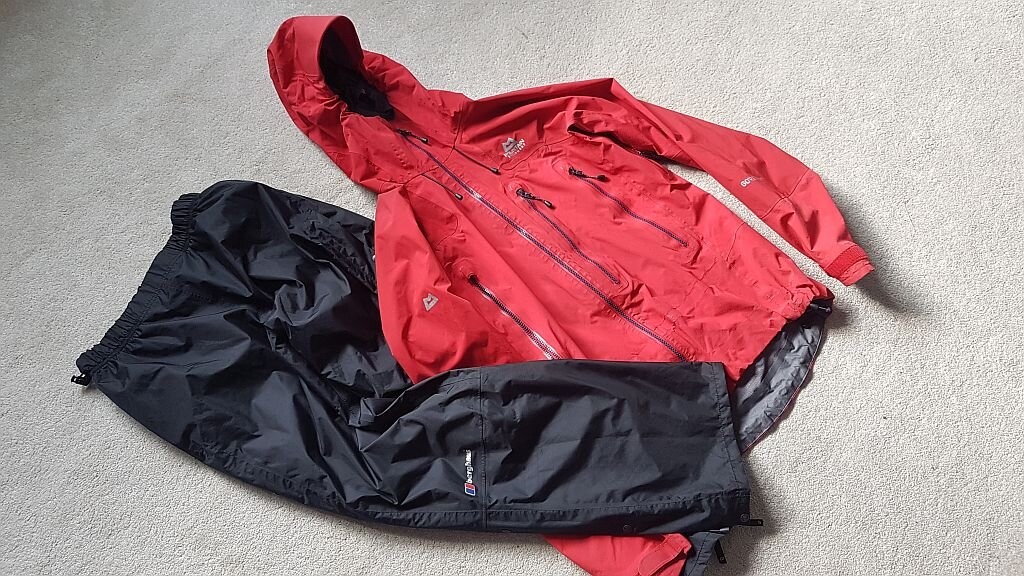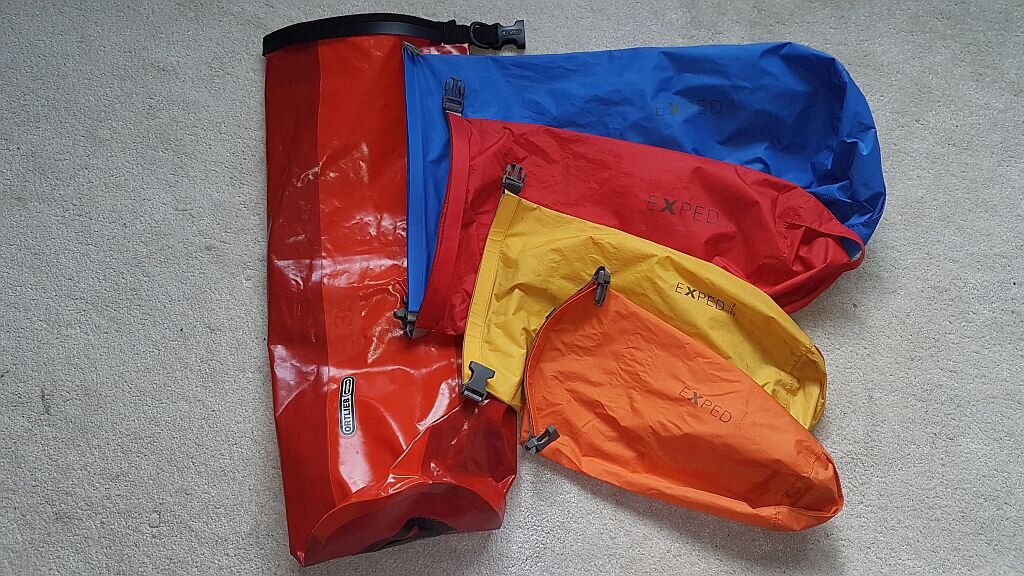Hiking Kit List (UK)
Joining us on a guided walk, navigation course or looking for a useful guide as to what to carry with you in your rucksack when out hiking in the Hills & Mountains of the UK. We’ve got you covered…
Quick Overview
Essential Kit:
Rucksack 35L approx.
Waterproofs: jacket & trousers (double up as wind proofs)
Warm Layers: fleece jumper, hat, gloves, scarf etc.
Map & Compass (and the skills to use them).
Food & Water
Emergency Kit: first aid kit + blister plasters, survival bag / blizzard bag, emergency shelter. (Also, extra food & compass.)
Headtorch
Useful Extras:
Dry Bags
Walking Poles
Powerbank
Sunglasses and sunscreen
Midge net/spray
& now for a bit more detail…
Essential Kit
Rucksack:
You’ll need something to carry everything with you. I use a 33 litre Osprey Talon or a 40:50 litre Lowe Alpine ascent rucksack, the latter for leading groups where I have a few extra bits of kit to carry. However, my main priority is comfort when loaded up, and to have a bit of spare room to make it easier to get things in the bag and find them again without unpacking the whole lot.
Waterproofs: Jacket & Trousers (double up as wind proofs)
UK weather changes quickly, particularly in the mountains, and what is a beautiful day down in the valley is not always that pleasant up on high.
Hard-shell vs Softshell:
When looking for waterproofs you will often see the terms Hard-shell & softshell. Simply put a softshell is water resistant as opposed to fully waterproof, and a hard-shell is waterproof for heavy rain. The hard-shell will keep the rain out in the worst conditions but needs separate insulation underneath. Softshell will keep out rain to an extent but provides some insulation as well.
Wind Proofs: My waterproofs also double up as my wind proofs. Wind chill can really affect how much enjoyment you have in a day as even a warm day can feel significantly cooler with wind. As wind speed often increases with height gain the subsequent chill can be quite dramatic when blowing through jumpers and fleeces. Wind proofs should stop the wind going through your other clothing thus keeping you warmer even if it is not an insulator itself.
Insulation - Warm Layers:
Fleece, Insulating Jacket, Hats, Gloves, Scarf etc.
Sadly its not always as warm up in the mountains as when you leave the car down in the valley. Air temperature cools & the wind can get stronger. For these reasons I usually carry at least one extra layer such as an insulating jacket or fleece jumper as well as hat, gloves, and a buff.
Gloves: I quite often have a thin ‘liner’ glove that I can wear just to keep the chill off as well as bigger pair that will fit over the top such as mitts. On particularly cold days I combine this with a jumper with thumb loops to keep cold air off your wrists between jumper & gloves.
(It may seem like overkill on a lovely warm day but it doubles as important emergency kit if you have a casualty to keep warm).
Map & Compass (& the Skill Set to Use Them)
These are vital bits of kit and they do require some knowledge of how to use them and preferably some practice with it too. There are loads of maps and compasses available.
Learn how to use these on one of regularly running Navigation Courses.
Map Case: Worth having to keep your map dry if it is required in bad weather.
Stop Watch: You will see in the picture I have also included a stop watch. Some more advanced navigation skills include timings and for this I have a stopwatch to hand, usually attached to my bag instead of on my wrist.
There are a variety of maps and compasses out there.
Note: I also have a phone app for mapping, as a back-up, and GPS units are available. They still require the basics to use them though, so it is important to know when they are of use as opposed to relying on them as your main navigational tool.
Food & Water:
Keeping the body fuelled & hydrated on the hills is very important. I usually carry plenty of snacks, sandwiches for a lunch stop, and water.
It is important to continually fuel the body while out, not just at lunch time. It takes a lot of energy to walk in the mountains and the last thing you want to do is get to the point of having no energy.
For me this means carrying plenty of easily accessible snacks, usually in the top of the bag, and a couple in pockets on me. Find what works for you.
Water: I usually carry 2 litres and adding squash if that means you will actually drink it! (I would up this to 3 litres for big days)
Leave No Trace – If you take it on the hill with you, you can carry it off the hill too. That includes banana skins! They take a long time to biodegrade, especially in the hills, and become unsightly. We always aim to leave no trace of us being in the hills.
Emergency Kit:
First Aid Kit + Blister Plasters, Survival Bag / Blizzard Bag, Emergency Shelter (also, extra food & compass).
We all hope to never have a big emergency but, unfortunately, accidents do happen. The nature of the mountains, with uneven ground and changing weather, means that it’s always a possibility. This doesn’t mean they should be reserved for serious emergencies.
My shelter is great for lunch stops in bad weather to hide from the elements. Morale can be hugely improved by getting a bite to eat and warm drink in a warm shelter. It only takes a matter of minutes to warm up a shelter with a few people in it. Note: A shelter for a solo walk is not ideal so I carry a survival bag or, on colder days, the blizzard bag.
I also keep extra food with this kit. I have no intention of using it but it’s there just in case of emergency or if they day becomes a lot longer than expected, for one reason or another. Likewise, I carry a backup compass in case I have an issue with the main one.
Headtorch:
Another bit of kit that doubles up well for emergency use, I always carry a headtorch and a spare, with spare batteries, whether I plan to be walking in the dark or not. Mountain days can always end up being longer than anticipated and when the light goes, a torch is a necessity. In emergencies, if it’s late in the day, Mountain Rescue may be required but can take time to arrive. Sitting in the dark is no fun and this can help you signal them.
N.B. Phones for Torches: I realise phones also have torches on them but it this is a waste of battery that you may desperately require in an emergency. Plus, they are really awkward to hold if you have a few hours of descent to do in the dark.
Useful Extras:
Drybags:
If you’ve watched the video you will have noticed everything packs itself into bags. These are dry bags. If you’ve not heard of these, they can be a really useful addition to your kit as they are designed to keep things inside of them dry.
I always pack them the same way, for example my red drybag always has emergency kit, the blue is for insulating layers, such as fleece and jackets, while yellow is hats and gloves, and orange is electricals. That way, when the weather is at its worst, I can just grab the drybag I require without getting everything else soaking wet.
I prefer these over the usual rucksack covers which can end up flying around and disappearing, if you’re unlucky, which means everything will get soaked.
Walking Poles:
I don’t use them all the time, as relying on them can be counterproductive for your balance on uneven tracks, but they are be very useful if your knees struggle when walking. It can take the pressure off but also, if you’re not super confident on descents they can help with balance.
Powerbank:
Nowadays phones get used a lot for photos, and cold weather can have an adverse effect on battery life of them, so I carry a small power bank as a backup just in case. It would be typical the one time you need to phone for an emergency is the day your phone battery dies!
Sunglasses & Sunscreen:
In Scotland? Or the UK? Yes, some days we get good weather! The last thing you want after your big day on the hill in beautiful weather is sun burn.
Midge Spray & Head Net:
Top of the list if you hike in Scotland in summer, midges are just not fun!












